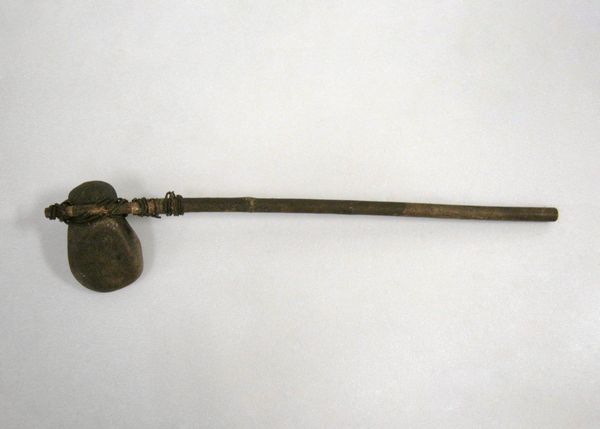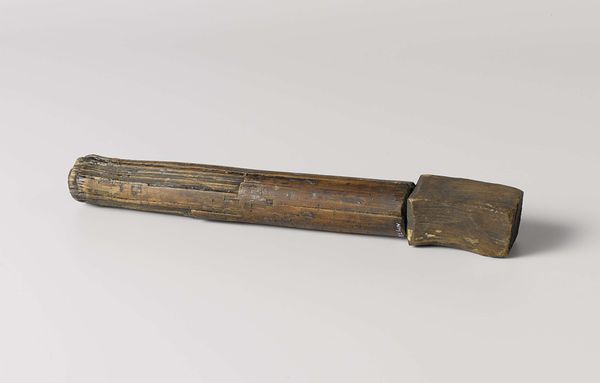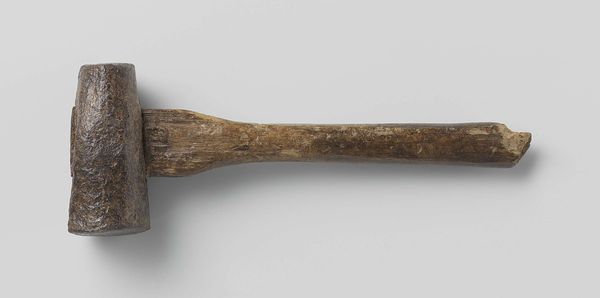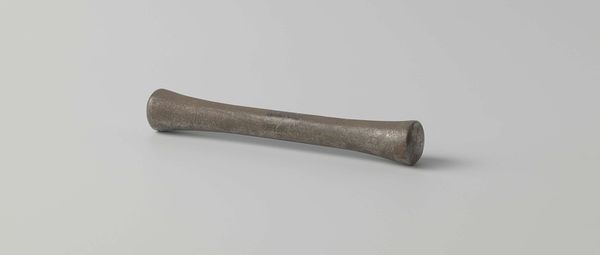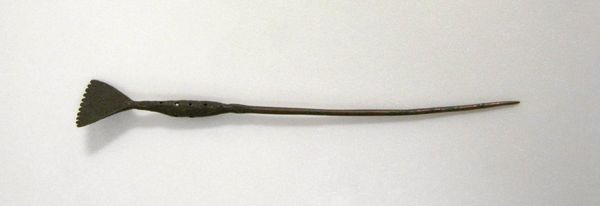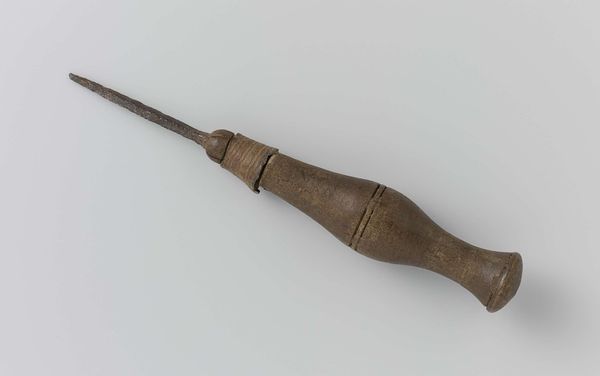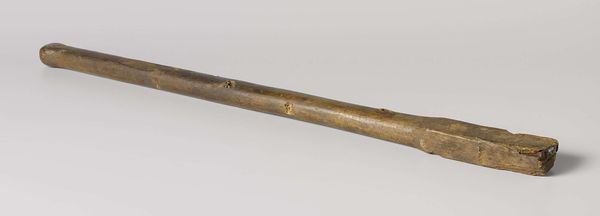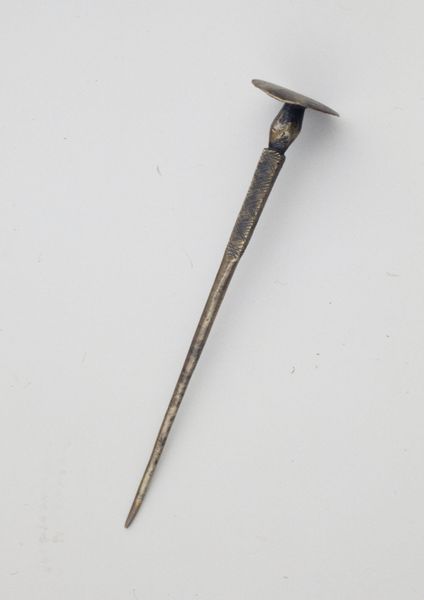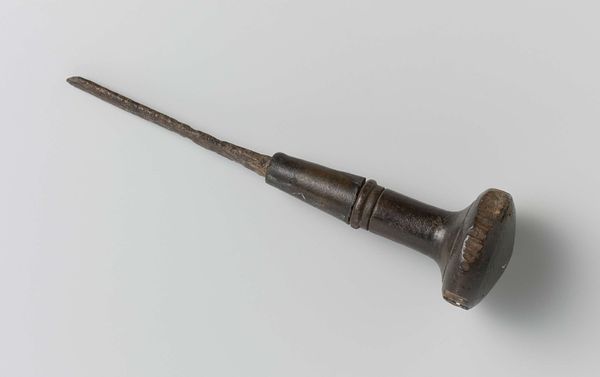
carving, sculpture
#
carving
#
sculpture
#
sculpture
#
indigenous-americas
Dimensions: 7 1/8 x 1 x 1 1/4 in. (18.1 x 2.54 x 3.18 cm)
Copyright: Public Domain
Curator: Here we have a piece known simply as "Pipe," held in the collection of the Minneapolis Institute of Art. Its origins trace back to someone possibly Lakóta. Editor: Immediately striking, isn’t it? It looks humble in its construction but suggests a depth of ritualistic purpose. You can tell it's been handled. The wood's warm color indicates careful treatment. Curator: Absolutely. Smoking pipes, among many Indigenous communities, were often viewed as sacred objects, instrumental in prayer and mediation. The material and the act are inextricably linked. This wasn't merely a recreational item. Editor: Examining its construction more closely, one can see marks suggesting whittling. It almost feels like a continuous form despite the carved bands, connecting to the larger role of Indigenous art forms often intertwined with daily practices. Was its creation meant as an individual act, or community labor? Curator: That is difficult to discern precisely, but the role of the carver within Lakota society undoubtedly held a respected position. Artisans, including those working with wood or pipestone, contributed significantly to the cultural fabric, upholding traditions. Also, this item's journey, ending in a museum collection, tells a complicated story about its appropriation and how we’ve come to understand its original context. Editor: Appropriation raises critical questions about labor. Consider who had access to the raw materials. Was it traded for? Was this wood a local find, impacting how they made their art and their community sustainability practices? This affects our understanding, making this 'Pipe' an intersection of labor, land, and cultural tradition. Curator: Indeed, seeing such an item on display encourages us to ask not just what the object is, but also who decides its meaning and how the circumstances of its exhibition can reshape understandings. Editor: Looking at "Pipe" now, it sparks my consideration of its materiality but also, its movement, the human exchange implied. Curator: Precisely. An object's social and cultural impact endures through display.
Comments
No comments
Be the first to comment and join the conversation on the ultimate creative platform.
